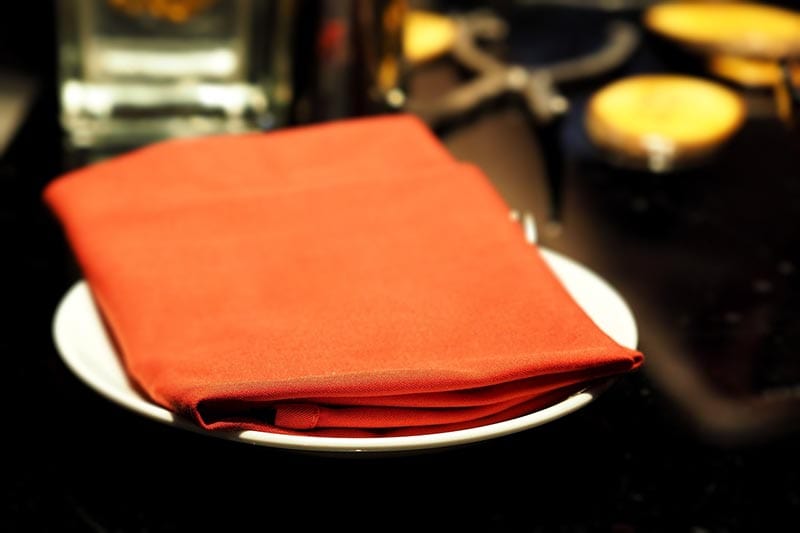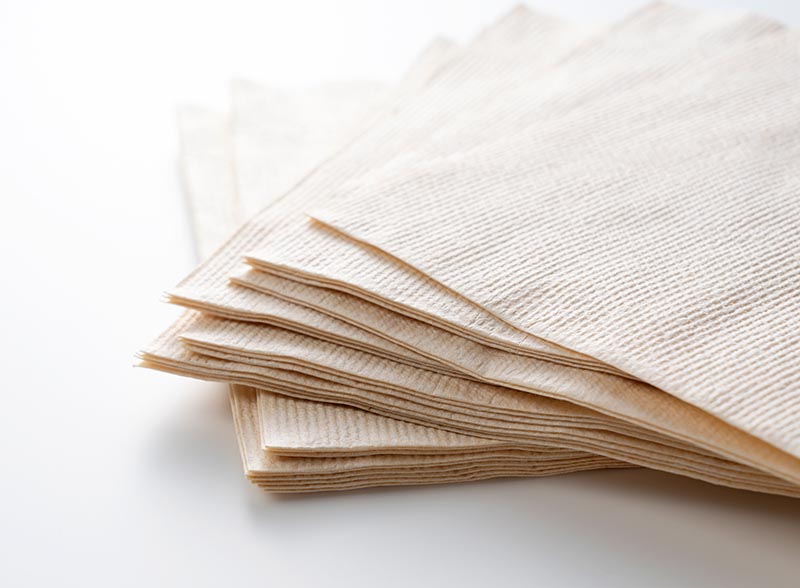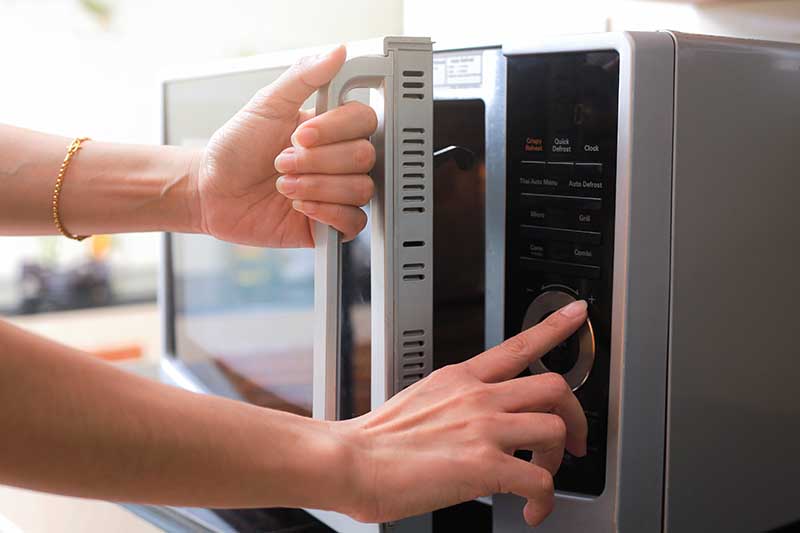Can You Put Napkins in the Microwave? (Microwave Safety Tips)
-

- Last updated:

Microwaves have become essential in most households, and most cannot do without them. After all, having a microwave does make cooking and even baking much easier. In fact, for most people microwaving cold meals is part of their daily routine, especially if they have busy schedules.
Not all containers should be used to microwave food. Some can damage the container and even the microwave, not to mention posing a significant risk to your health. Most to-go food, especially dry foods and pastries, come either packed in cardboard or wrapped in a paper napkin, which might leave you wondering if you can put the napkin in the microwave. The answer is yes, you can microwave napkins.
In this article, we’ve outlined the various kinds of napkins you can use in the microwave and the precautions you should take with each.
Can You Microwave Food with Napkins?
Yes, you can—both cloth napkins and disposable napkins are microwavable. They are typically used to cover shallow dishes when warming stews, soups, and saucy food to prevent them from sputtering and damaging the microwave. You can also use a napkin to cover the food you don’t want getting heated directly. However, you need to take precautions since they can burn when microwaved for too long.
Also, ensure that the napkin is not touching your food directly. Some microwave-safe napkins include:
Cloth Napkins
Cloth napkins are generally microwave friendly. They are recommended when reheating food since they prevent direct heating. These napkins pose no risk when they touch your food because they don’t burn or stick to the food. You can therefore place your food, especially pastries, on them when warming.
Brown Napkins
Although these napkins are microwave friendly, you must ensure they don’t come in contact with the food. If the food gets too hot during heating, the napkin may contaminate the food making it inedible. They are best used when heating food for a short duration.
Paper Towel
Paper napkins pose no immediate risk to the napkin or the food. Since they contain a small amount of moisture, they are unlikely to catch on fire at once. It’s vital to note that if you overheat them, they can dry out, and you’ll notice the edges start to curl and get scorched. To reduce the risk of your paper napkin catching fire, consider heating your food in 2 or 3-minute intervals.

Reasons Why Your Napkin Might Catch Fire in the Microwave
Despite being microwave-safe, there are a few reasons your paper napkin might catch fire.
- Folding or scrunching the paper towel. A folded paper napkin traps more heat than a flat one.
- Using poor-quality paper napkins.
- Microwaving it for 5 minutes or more without checking it.
- Stacking more than four paper towels in the microwave. This allows heat to build up between the layers and dry them out quicker.
Does Wetting the Paper Napkins Help?
If you are concerned about your napkin catching fire when you put it in the microwave, consider wetting it to add moisture. This prevents it from overheating and getting scorched, thus minimizing the fire risk. A wet napkin also absorbs heat more effectively than a dry one, thus enabling you to heat your food evenly.
Napkins also absorb heat and liquid from the food you are warming, and they can burn you as you take them out. In this case, wetting them may pose a greater risk, as the water gets converted into steam. If you are using a wet napkin, avoid heating it for a long time, and don’t touch it directly as you take your food out of the microwave. Instead, use a couple of dry paper towels or an oven mint to take the dish out of the microwave.
5 Microwave Safety Tips

Most microwave-related injuries result from exploding liquids and semi-solids, overheating food, burns from hot containers, and fires. Some safety tips you can follow when using the microwave include:
1. Use Microwave-safe Containers
You should only use microwavable containers when heating or cooking food in the microwave. Most microwave-safe containers typically have a symbol at the bottom; you can also confirm by checking the instructions on the box they came in.
2. Never Try to Use the Microwave With the Door Open
Using the microwave with the door open can lead to exposure to microwave radiation waves. Consequently, if your microwave can operate with the door open, that’s a sign of malfunction, and you should stop using it immediately.
3. Don’t Heat Sealed Foods and Beverages
Heating sealed food in the microwave can lead to an explosion when they overheat. This can damage the microwave or burn you if it comes in contact with your skin.
4. Place the Microwave Away from Heating Sources
Placing your microwave near other heating sources, including ovens, stoves, and electric heaters can cause it to overheat. This could be disastrous if the microwave catches on fire or explodes and could cause severe injuries.
5. Never Activate the Microwave When It’s Empty
Running your microwave with nothing could destroy its magnetron or start a fire. It must always have some food substance for safety when it’s turned on.
Conclusion
While there are still plenty of microwave-safe containers that you can use to warm food, including napkins, there are some items that you should never put in your microwave. It’s best to transfer food from these materials when warming. Some examples of such materials include; Styrofoam, cardboard, metals, and wooden bowls and plates.
As a general rule, if you cannot tell what a container is made of and does not have the safety symbol at the bottom, don’t use it in the microwave. It’s one of the best ways to ensure your microwave stays in great shape for years.
Featured Image Credit: Eak K, Pixabay
Contents

